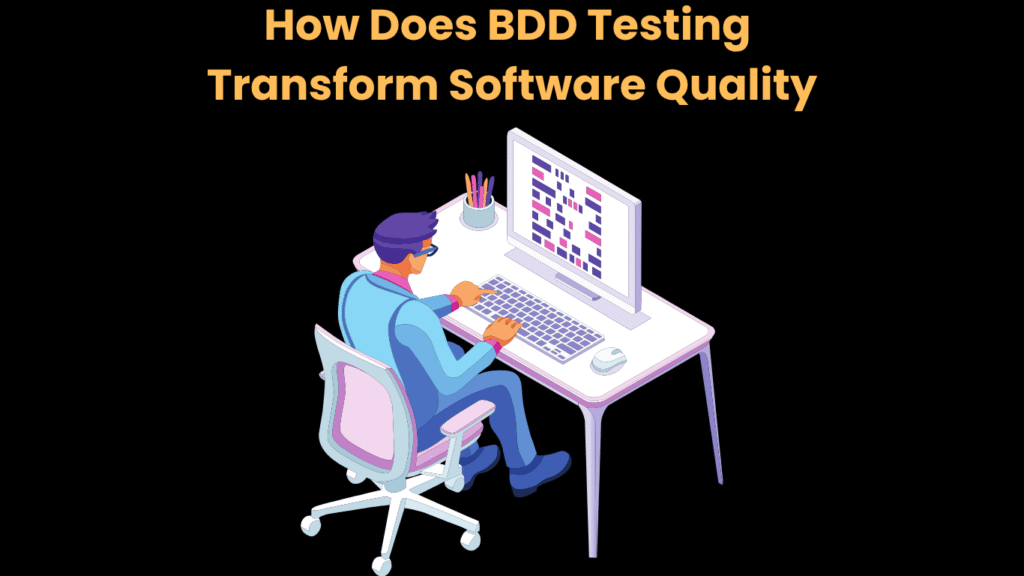The modern utility-driven world results in delivering high-quality software that meets user expectations being more challenging than ever before. Behavior-Driven Development (BDD) testing has emerged as an effective method of closing the gap between the business and technical teams. This method enhances the effectiveness and ease of testing through the utilization of real-life situations to clarify the behavior of software. BDD testing is a new approach to testing, taking a radical shift by laying much emphasis on the aspect of cooperation and open communication. Instead of creating complex technical requirements, teams create easily explained and understood scenarios explaining how software must work through the eyes of the user.
Enhanced Team Collaboration and Communication
BDD testing can destroy any communication barrier between developers, testers and business analysts as it speaks about the behavior of the software using a language that is easily interpreted. Test scenarios can be designed using a familiar and easy-to-understand format of Given-When-Then, and any member of the team can understand them without the involvement of technical experts. Due to the shared understanding, nothing is misunderstood, and all the people within the team are driven towards the same goals. Since BDD is a shared activity, it encourages the use of more frequent conversations on requirements, which enhances synchrony and minimizes surprises during development.
Improved Test Coverage and Quality
BDD scenarios provide thorough test coverage of crucial functionality by concentrating on actual user behaviors and business objectives. Teams can find edge situations and other problems that would go unnoticed in conventional testing methods by considering real-world use scenarios. Tests that confirm the most important factors for end users are more significant when approached from a user-centric perspective. Teams may build strong test suites that detect flaws early and preserve software quality throughout the development lifecycle with the aid of BDD’s methodical methodology.
Faster Bug Detection and Resolution
The cost and effort needed to resolve bugs are greatly decreased when teams use BDD testing to find and fix problems far earlier in the development process. Developers have clear expectations about expected behavior from the outset since scenarios are developed before code is implemented. Many problems are avoided before they are introduced because of this proactive strategy. When problems do occur, it is simpler to identify them and swiftly put targeted remedies in place since BDD scenarios are clear and explicit.
Living Documentation for Long-term Success
BDD scenarios offer a current source of information on how a system behaves as well as a live documentation that evolves with the code. Since it is achieved through active update of BDD scenarios during the course of testing, they are kept up to date as opposed to traditional documentation, which often runs out of date. This documentation is very helpful to future development initiatives, stakeholders, and new team members. Anyone may easily comprehend what the program does and how it should respond in various scenarios thanks to its understandable nature.
Cost-Effective Development and Maintenance
BDD testing brings down the overall development cost because it avoids rework and reduces the necessity of intensive manual testing. By troubleshooting in the initial stages and ensuring proper understanding of requirements, teams can avoid last-minute alterations and production-related mistakes, which are costly. The time spent elucidating needs and clearing up ambiguities is decreased by the collaborative approach.
Read More: AI in eCommerce: Using Intelligent Tools to Improve Customer Experience
Conclusion
Behavior-Driven Development (BDD) is transforming software quality through a focus on user-friendliness of tests, readability, and collaboration. This is a smooth change when Opkey is utilized. With its AI-enabled or no-code platform, every team member, both technical and non-technical, can assemble, automate, and handle BDD tasks with ease, creating and running BDD scenarios. Opkey’s enterprise testing tool automates the BDD process, ensures faster releases and fewer issues, and overall better test coverage by associating teams with Gherkin-based stories and integrating with CI/CD pipelines and enterprise services.




